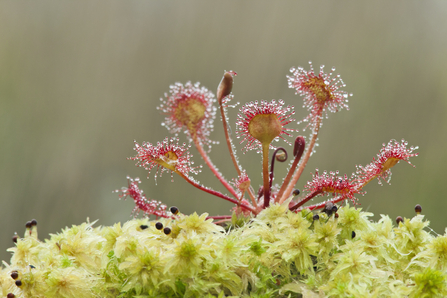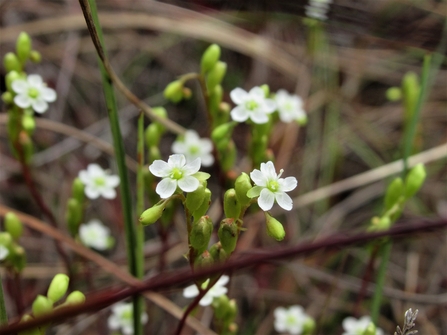When you think of carnivorous plants you may think of exotic species such as the venus fly trap of subtropical America, and the pitcher plants of southeast Asia. But would you expect to find such weird and wonderful plants in Lancashire?
Well look no further than some of our region’s peatlands and you might just be lucky enough to find a tiny, jewel bright, plant with a gruesome eating habit – the sundew.




